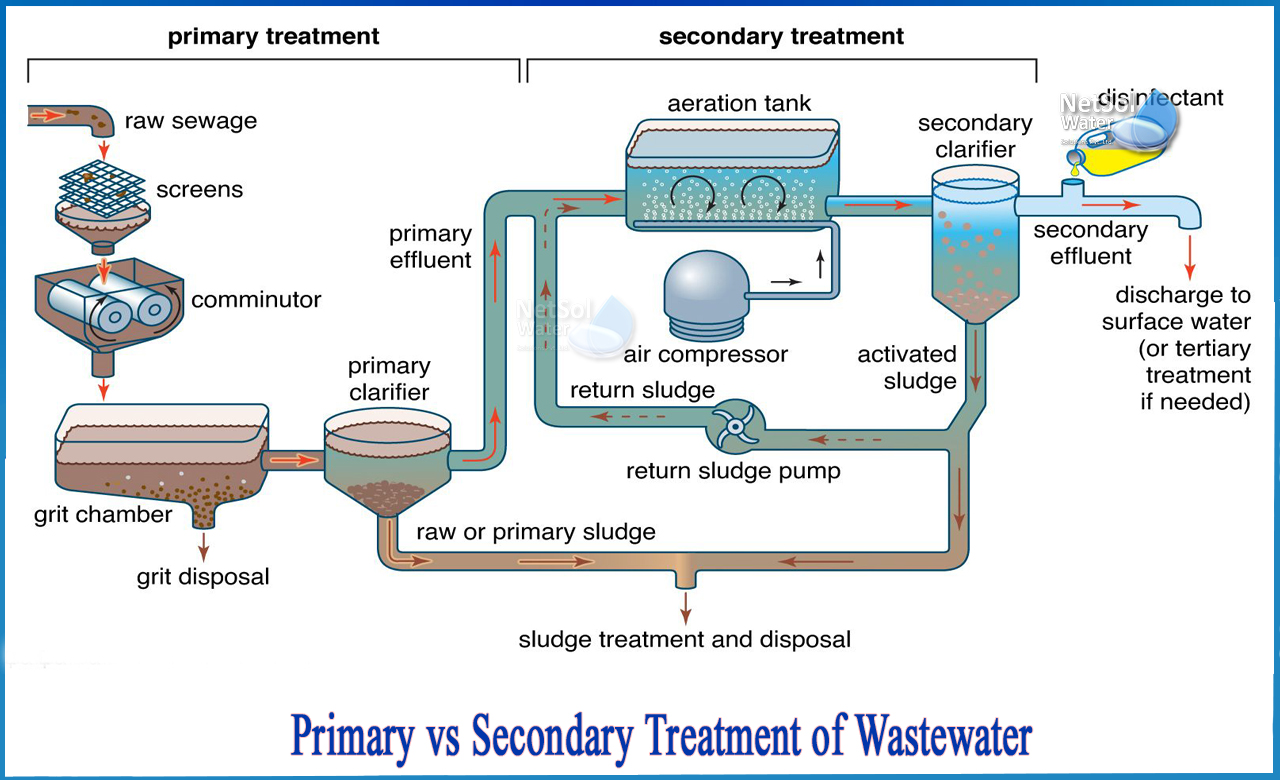What is wastewater?
Wastewater refers to the water that has been used in toilets, showers, baths, kitchen sinks, laundries, and industrial processes. Water makes up 99 percent of wastewater, with the remaining 1% made up of polluting garbage and solids. Shops, residences, farms, factories, offices, fuel and transportation depots, quarries, mines, and vessels are all potential sources of wastewater. Wastewater could further be classified or categorized as:
1. Domestic wastewater
The water that drains from the workplace or home's kitchen sinks, showers, toilets, bathtubs, and laundries.
2. Industrial wastewater
Water that comes from industrial and manufacturing contexts, such as a food processing factory, is referred to as 'industrial waste' or 'trade waste.' This can also include water used for other reasons, such as cleaning or cooling machines.
What is Wastewater Treatment?
The process of transforming wastewater — water that is no longer needed or fit for use – into potable water that can be discharged back into the environment is known as wastewater treatment.
Contaminants in wastewater include bacteria, chemicals, and other poisons. Its treatment seeks to reduce toxins to safe levels, allowing the water to be released back into the environment.
Stages of Wastewater Treatment:
When wastewater reaches treatment plants, it goes through four stages:
1. Preliminary treatment (pre-treatment) - grit and gravel removal, as well as the screening of big materials.
2. Primary treatment - to settle bigger suspended organic debris that has accumulated.
3.Secondary treatment - to break down and remove any remaining organic materials biologically.
4. Tertiary treatment - different treatment techniques are used to address different contaminants.
What is Primary Treatment?
The process of eliminating solid materials from wastewater is known as primary wastewater treatment. It is the initial step in the wastewater treatment process, in which wastewater is pumped into tanks, where solids settle to the bottom and grease and scum rise to the top. The 'primary phase' or ‘septic process' is another name for the primary process.
The lighter wastewater and debris exit at the mid-water level and enter the secondary pre-treatment chamber, where anaerobic bacteria (bacteria that do not require oxygen to survive) or aerobic bacteria feed on the contaminants in the water and begin to break them down.
What is Secondary Treatment?
Aerobic bacteria are used in the secondary wastewater treatment process to break down and eliminate any leftover trash and other tiny particles. The waste and microorganisms are both found in the sludge, and bacterial composition removes both the remaining solids and nutrients.
Secondary treatment relies on naturally occurring biological processes, which means that the oxygen level in the wastewater varies throughout and does not remain constant. Depending on the stage, bacteria are either aerobic (need oxygen) or anaerobic (do not require oxygen).
What is the difference between primary and secondary wastewater treatment?
1- The process of breaking down the sewage in wastewater is the fundamental distinction between primary and secondary treatment. The trash is processed physically using equipment and filtering in the primary treatment. While secondary treatment may employ similar elements, this method uses microbes to provide biological treatment.
2- The primary water treatment processes remove large particles from wastewater, and secondary treatment eliminates smaller particles that have already dissolved or suspended. The primary treatment method involves sedimentation and filtration, whereas additional processes utilize biological breakdown via aerobic or anaerobic units.
PRIMARY WASTEWATER TREATMENT |
SECONDARY WASTEWATER TREATMENT |
|
| 1 It is a physical method of treatment | 1 It is a biological treatment method. | |
| 2 Large particles and floating debris such as leaves, papers, and rags, solids such as sand, grit, and greasy substances are eliminated. | 2 It entails the removal of biological materials that is finely suspended and disintegrated. | |
| 3 It employs sedimentation and filtration techniques. | 3 It employs aerobic and anaerobic biological organisms. | |
| 4 It is a quick and time-saving procedure. |
|
3. Another distinction between these processes is the length of time it takes to finish them. The primary treatment is completed faster, but the secondary treatment takes significantly longer because organic bacteria consume the waste.
Netsol Water is a manufacture of all sewage equipment’s used for treatment processes.
For more information, contact Netsol Water!
Netsol Water is Greater Noida-based leading water & wastewater treatment plant manufacturer. We are industry's most demanding company based on client review and work quality. We are known as best commercial RO plant manufacturers, industrial RO plant manufacturer, sewage treatment plant manufacturer, Water Softener Plant Manufacturers and effluent treatment plant manufacturers. Apart from this 24x7 customer support is our USP. Call on +91-9650608473, or write us at enquiry@netsolwater.com for any support, inquiry or product-purchase related query.



